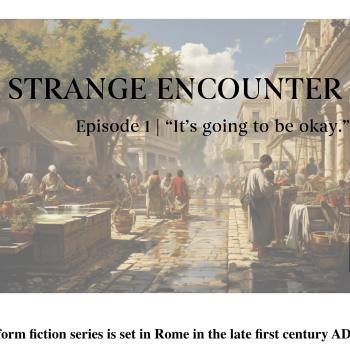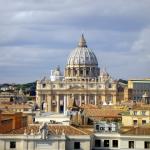Right now I am researching on early Jewish and Christian idol polemic. It is common for Biblical scholars to argue that the Jewish diatribe against pagan idol worship is a caricature and, in fact, “pagans” (like Greeks) knew that their cult statues were not really gods, but symbols and sometimes a means of communication or point of contact.
In my research, I want to show that the state of the issue is much more complex. While Greek philosophers seemed to have a distaste for viewing the statues as the real deity, it seemed that in the wider culture there was serious ambiguity. This engages in the wider issue of how images and statues were viewed in general (e.g., statues of leaders and heros, commemorative statues of the dead, etc…).
My argument is going to be that statues served as objects that fill that middle space between the mortal/visible world and the “other”/invisible world – at such a juncture, the statue (in Greek imagination) does actualize the divine presence. Or, a statue of a dead person does, somehow, act as more than just an object, and yet other than the human person. One example, known well to classicists I image, but new to me until recently, is Pausanias’ story of the athlete Theagenes. Here is Pausanias’ account. It is hilarious and insightful! (I will share more on my research over time, I am sure).
When he [Theagenes] died, a man who had been one of his enemies while he was alive came to the image [memorial statue] of Theagenes every night and flogged the bronze as though he were causing pain to Theagenes himself. The statue finally put an end to this hybris by falling on the man and killing him, but subsequently his children proceeded to prosecute the image for murder. So the Thasians dumped the statue into the sea, following the judgment of Drakon, who, when he wrote laws dealing with homicide for the Athenians, banished every non-living things if any of them, in falling, happened to kill a man. After a time a time, however, when the earth yielded no crops to the Thasians, they send envoys to Delphi, and the god responded by telling them that they should receive back their exiles. But although in obedience to this advice they received them back, they obtained no relief from the famine. Therefore they went a second time to the Pythian priestess, saying that, although they had done what was commanded them, the wrath of the gods was still upon them. Thereupon the Pythia answered them: ‘You leave unremembered your great Theagenes.’ And they say that when they were at their wits’ end as to a means by which thy could rescue the statue of Theagenes, some fisherman, after putting out to sea in search of fish, caught the statue in their net and brought it back to the land. The Thasians set the statue up where it originally stood, and they now have the custom of worshipping him as if he were a god.” (6.11.2-9)
You may be interested to know that it was probably the special court, the Prytaneum, that took up this charge against the statue – as this was the special court that dealt with grievances against physical objects!











